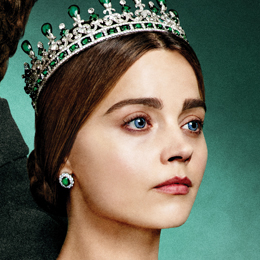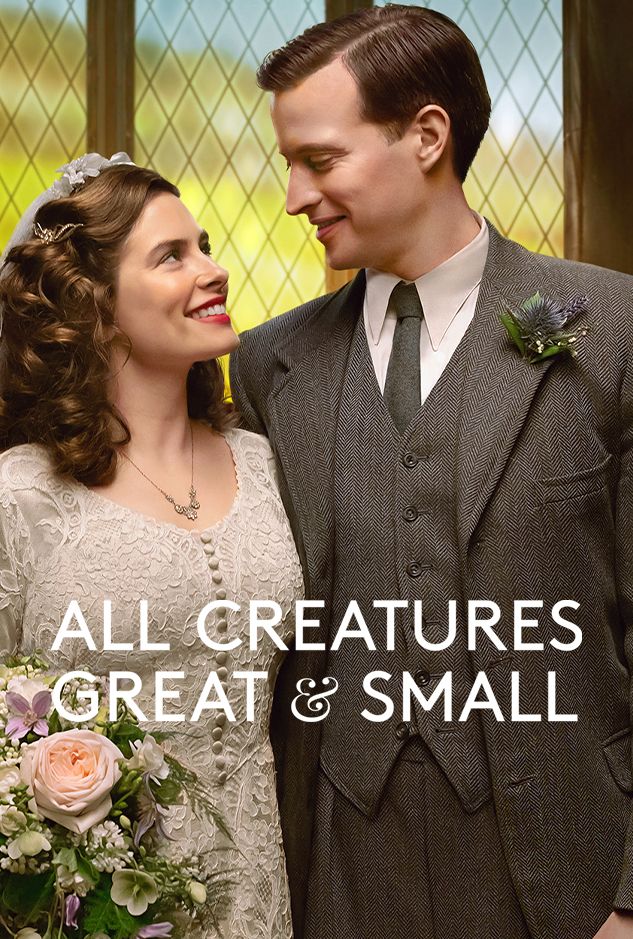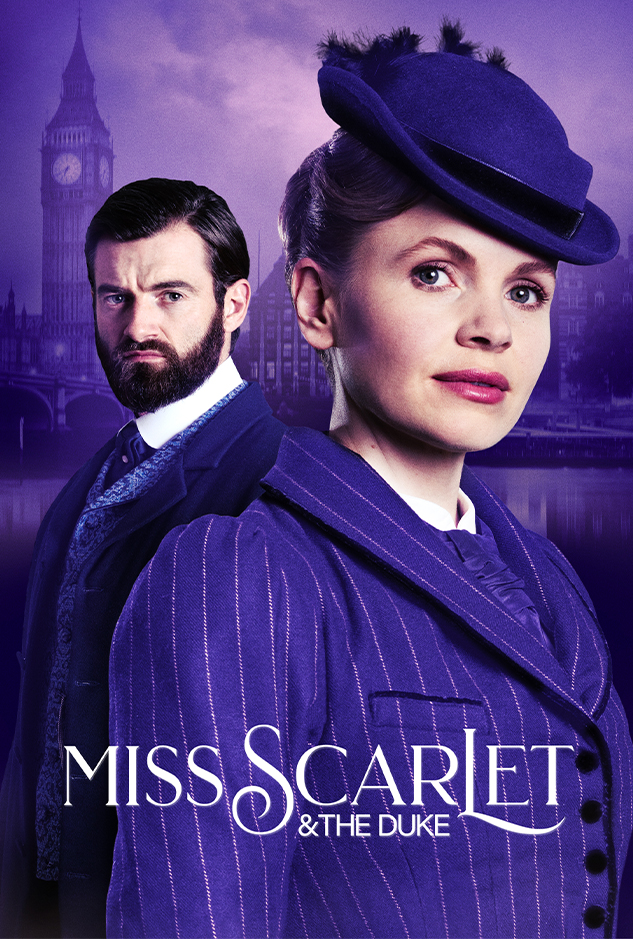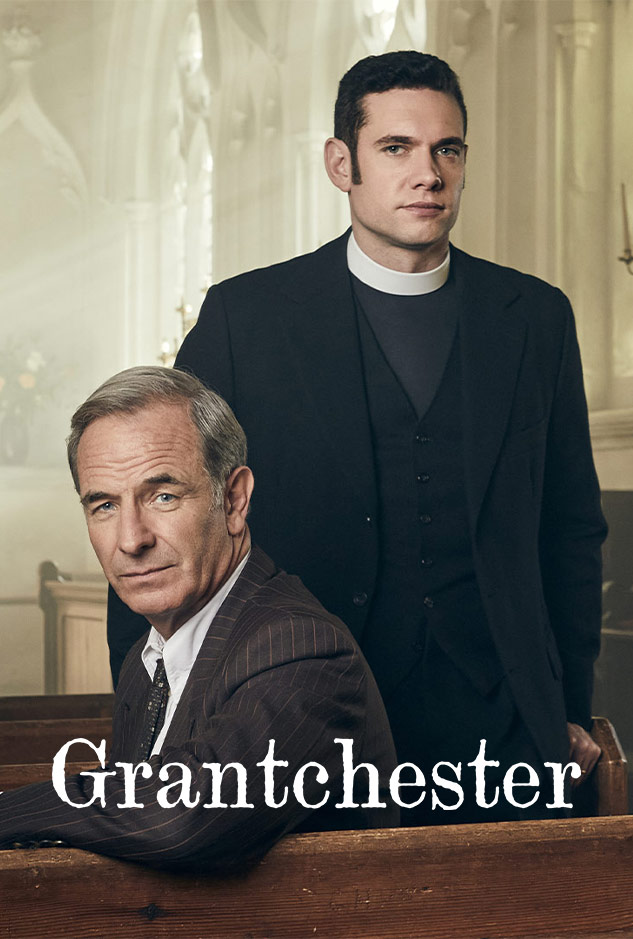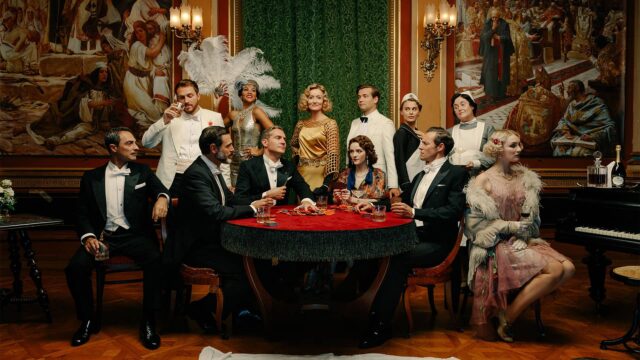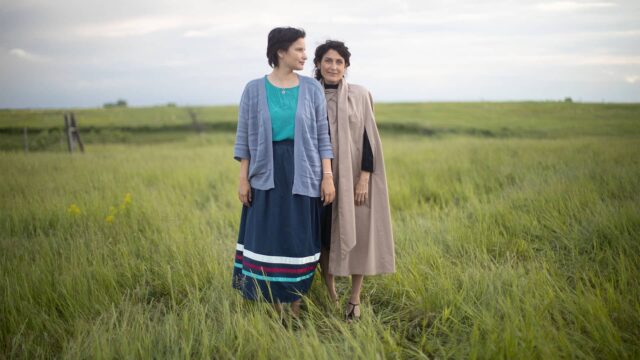The Surprising Lives of Victoria’s Children
In Victoria, Season 3, we come to know the clever young Vicky and spirited future King Bertie, but what about the rest of Victoria and Albert’s growing brood? Victoria and Albert had 9 children in total. Which son was Victoria’s favorite? Which daughter lovingly nursed Albert in his final days? Who defied protocol to marry a non-royal? Learn all about the rich, storied history behind the Royal couple’s nine children and their fascinating (and sometimes scandalous) lives.
- 1.
Princess Victoria Adelaide Mary Louise

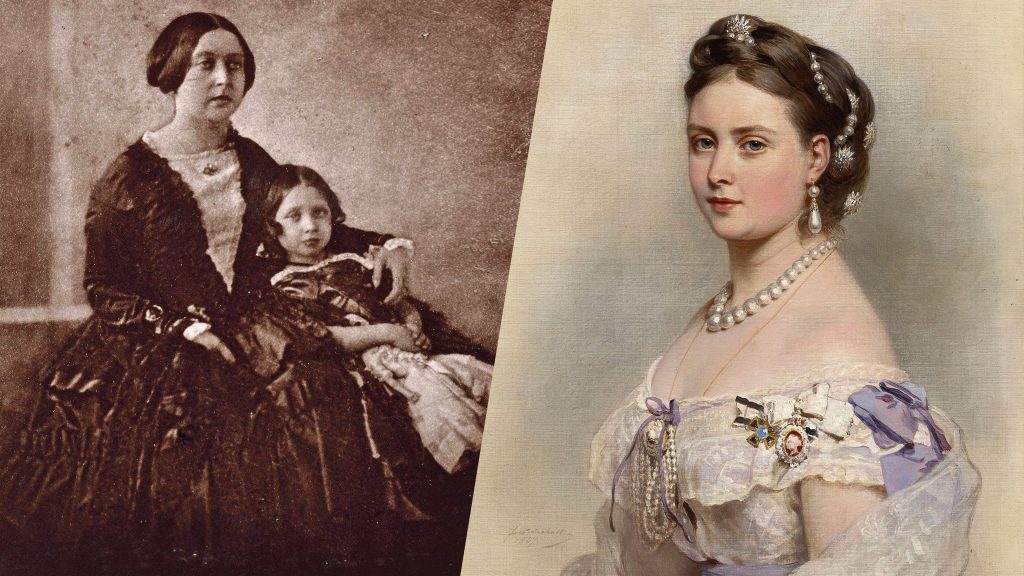
left: Queen Victoria with her eldest daughter Victoria, Princess Royal circa 1845 | right: Victoria in 1867, portrait by Franz Xaver Winterhalter
Princess Victoria Adelaide Mary Louise was the eldest daughter of Queen Victoria and Prince Albert. As depicted in Victoria, she was a bright child and a clever scholar. As she grew up, Vicky, as she was known to her family, could also be challenging. “A more insubordinate and unequal-tempered child and girl I think I never saw!” Queen Victoria wrote to her teenage daughter.
Vicky met her future husband Friedrich, the crown Prince of Prussia, in 1851 at The Great Exhibition. She was 11 years old at the time, and he was nine years her senior. When Vicky was 15, Friedrich proposed, and they were married on January 25, 1858. After the service, they led the recessional to Felix Mendelssohn’s The Wedding March, launching a tradition that continues to this day.
Vicky became Empress and Queen of Prussia when her husband succeeded the throne on March 9, 1888, but it was short-lived. Friedrich died of cancer just 99 days later, on June 15, 1888 at the age of 56, and the couple’s eldest son, Wilhelm II, became Emperor.
- 2.
Prince Albert Edward Wettin

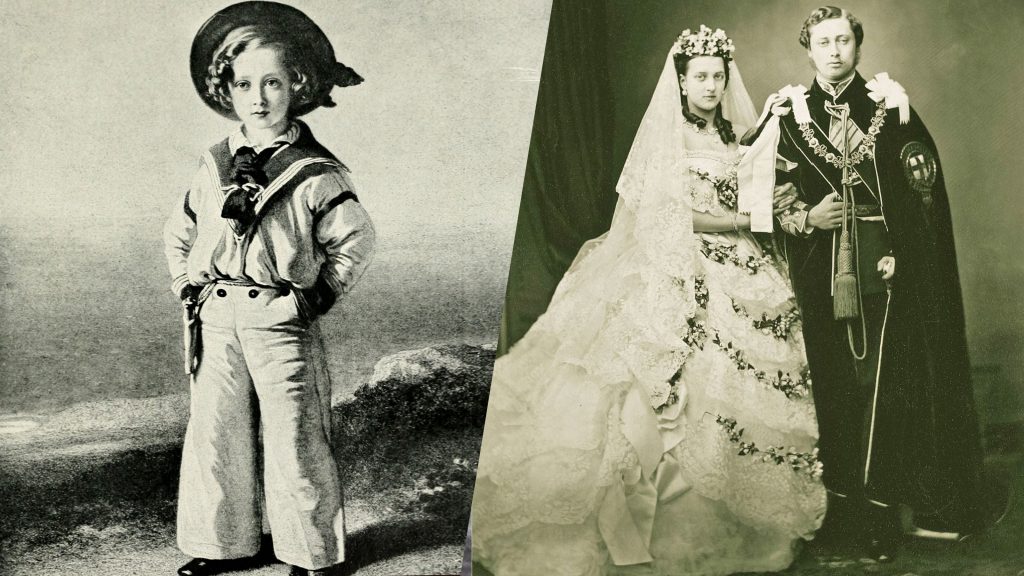
left: Portrait of Albert Edward, Prince of Wales, by Winterhalter, 1846 | right: Edward and Alexandra on their wedding day, 1863
Albert, the Prince of Wales, became Edward VII in 1901, after being heir to the throne for 60 years, longer than any previous royal (a distinction that now goes to Prince Charles). Just like the Victorian era is named for Queen Victoria, the Edwardian era is named for Albert Edward.
Bertie, as he was known throughout his life, was not a model scholar like his elder sister Vicky, and though he studied at Oxford and then Cambridge. What he lacked in academic prowess, Bertie made up for in sociability, and was considered by many a playboy.
While in Ireland, Bertie had an encounter with actress Nellie Clifden. When news of the event reached an ailing Prince Albert, he traveled to rebuke his son. When Albert died of typhoid two weeks later, Victoria blamed her son, writing “much as I pity him I never can or shall look at him without a shudder, as you can imagine.” In 1863, Bertie married Princess Alexandra of Denmark, but scandal continued to follow him.
He ascended to the throne on January 22, 1901 at the age of 59.
- 3.
Princess Alice Maud Mary

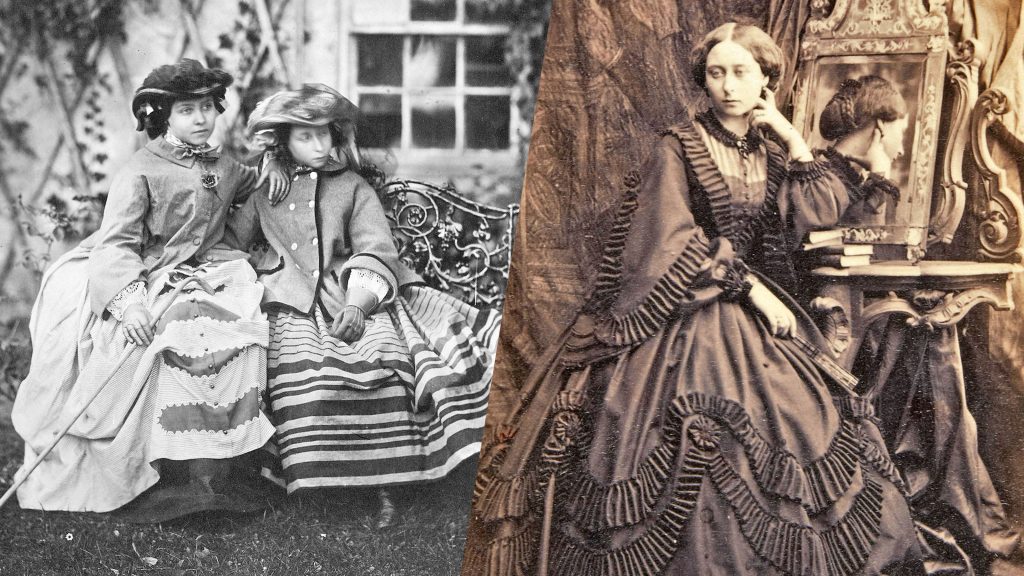
left: Alice (right) and her sister Victoria in the 1850s | Princess Alice Maud Mary. Photograph by Camille Silvy, June 1861
Alice, born April 25, 1843, was embraced into the family by older siblings Vicky and Bertie, even considered “the beauty of the family.” Artistic and compassionate, Alice notably attended her father’s side during his typhoid illness. Just 18 years old at the time, Alice’s care and devotion was remarkable, allowing the Queen to attend to her duties.
Alice married Ludwig IV, Grand Duke of Hesse and by Rhine, less than a year after her father’s death, and they went on to have seven children. Their marriage, however, was not perfect. Alice later wrote to her husband, “I longed for a real companion, for apart from that life had nothing to offer me in Darmstadt. I could have been quite happy and contented living in a cottage, if I had been able to share my intellectual interests, and intellectual aspirations with a husband whose strong, protective love would have guided me around the rocks.”
Alice’s attention turned to the plight of the lower classes, and she looked for ways to help the less fortunate. She also aided wounded soldiers, and befriended Florence Nightingale.
Alice and Ludwig had seven children. Daughter Alexandra tied her fortunes to the ill-fated Romanov family when she married Nicholas II, the last czar of Russia under Romanov rule. She was executed by the communists in 1918.
Alice was 35 years old at the time of her death.
- 4.
Prince Alfred Ernest Albert

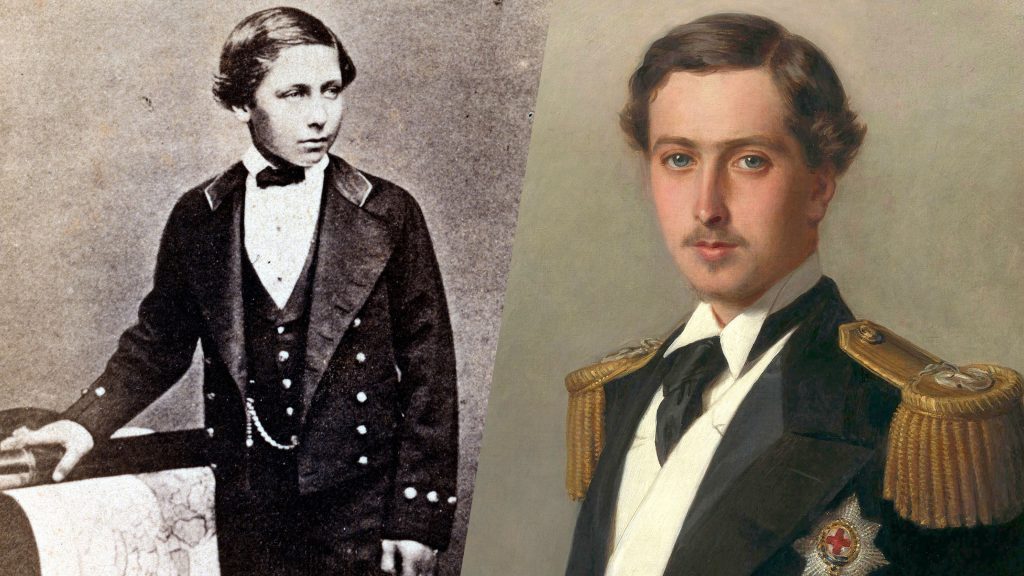
left: Alfred Ernest Albert in 1861 | right: Prince Alfred at age 21, in naval uniform with the star of the Garter
Born on August 6, 1844, Victoria and Albert’s fourth child Prince Alfred was second in line to the throne until 1864, when his older brother Edward (Bertie) started having children. When he was twelve years old, Alfred entered the Navy, passing his exams and getting a position as mid-shipman at the age of fourteen. He wasted little time becoming Captain and then Commander of his own ship, the HMS Galatea, in which he made ambitious voyages. He became the first British royal to visit Australia and New Zealand, as well as Japan, Hong Kong, India and Sri Lanka (then Ceylon). In 1868, on a visit to Sydney, Australia, Alfred was shot in the back by a psychologically disturbed man. The Prince’s injury, though serious, was not fatal.
Prince Alfred was also an avid stamp collector for many years, later selling his sizable collection to his big brother Bertie. That same collection was passed down through the royal bloodline, and today belongs to Queen Elizabeth II, as part of the Royal Philatelic Collection.
Prince Alfred went on to marry the Grand Duchess Maria Alexandrovna of Russia in January 1874. They had five children, and his descendants became part of the Romanian royal family.
- 5.
Princess Helena Augusta Victoria

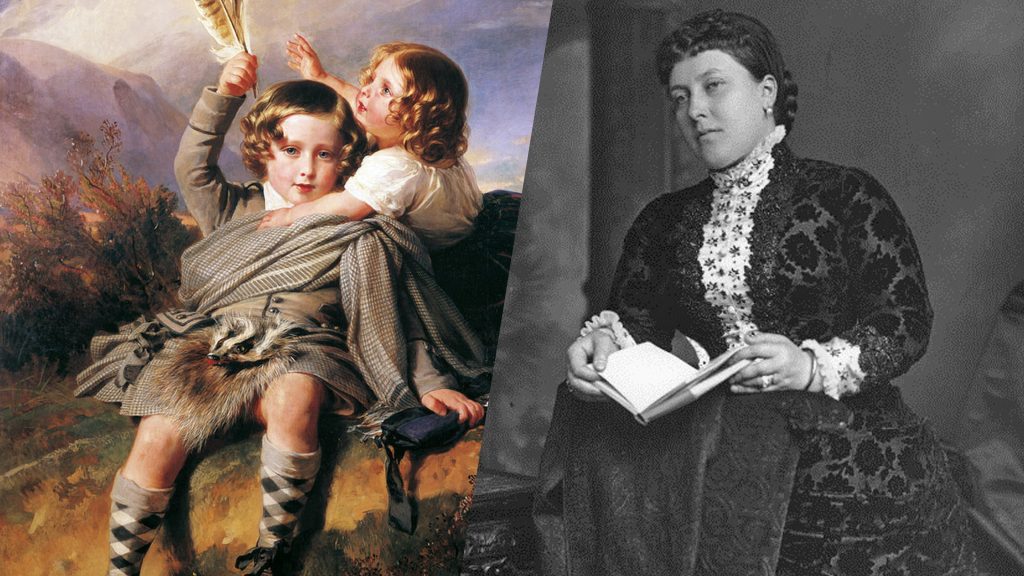
left: Princess Helena (right) with her brother Prince Alfred. Portrait by Franz Xaver Winterhalter.| right: Princess Helena Augusta Victoria of Schleswig-Holstein
Princess Helena, born on May 25, 1846, was the fifth and middle child of Albert and Victoria.
Known as ‘Lenchen’ by her family, she was not the most artistically or academically inclined of her siblings, instead preferring to be outdoors or playing with animals. Devastated by her father’s death in 1861, Helena wrote to a friend, “What we have lost nothing can ever replace, and our grief is most, most bitter … I adored Papa, I loved him more than anything on earth, his word was a most sacred law, and he was my help and adviser … These hours were the happiest of my life, and now it is all, all over.” (from My Dearest, Dearest Albert: Queen Victoria’s Life Through Her Letters and Journals, by Karen Dolby)
When she was thirteen, Prince Albert’s former librarian, Carl Ruland, was a tutor to Helena’s older brother Bertie. Helena began a flirtatious relationship with Ruland, but Victoria, catching wind of this, dismissed Ruland. The Queen began to look for a suitable husband for her daughter, eventually settling on Prince Christian of Schleswig-Holstein. With no foreign commitments, Prince Christian could remain with Helena in England, leaving Helena close by should the Queen need her. Helena had proven to be invaluable, helping Victoria keep up with an extensive agenda of royal engagements. Helena was active with charities, and was instrumental in founding the British Red Cross. She became president of the Workhouse Infirmary Nursing Association and the Royal British Nurses’ Association, and also founded the Royal School of Needlework.
Helena and Christian defied expectations and were very happy together until his death 51 years later. They had six children, though two died in infancy. Helena remained a close confidante to her mother until Victoria’s death in 1901.
- 6.
Princess Louise Caroline Albert

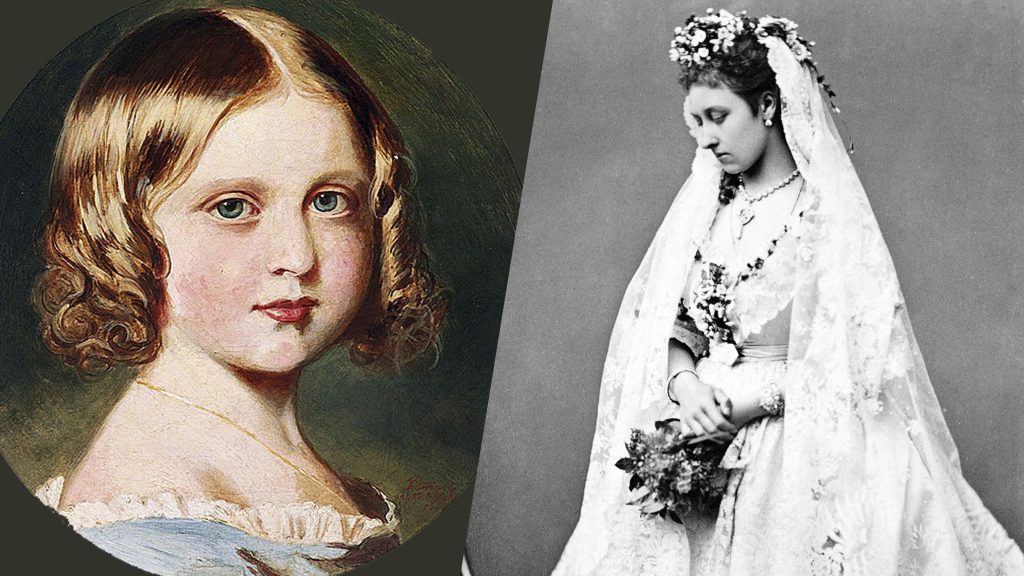
left: Portrait of Princess Louise (1848-1939), inscribed and dated ‘Victoria/after Winterhalter/1851’ | right: Princess Louise in her wedding dress
Victoria and Albert’s fourth daughter, Louisa Caroline Alberta, or “Louise,” was born on March 18, 1848, as revolutions were sweeping across Europe. She was said to be the prettiest of Victoria’s daughters, and sharp, lively, forward-thinker who supported female equality and pursued an arts education at a public institution, the first member of the family to do so.
She caused a stir when she defied Royal protocol to marry a ‘non-royal’, John Campbell, Marquess of Lorne, later 9th Duke of Argyll. Lorne was eventually appointed the Canadian Governor General. There, Louise and her husband were involved in a serious accident in 1880, when the carriage they were traveling in overturned and was dragged by horses for 400 yards. Louise suffered with a severe concussion, one of her earlobes split in two, but otherwise she and Lorne escaped intact. Alberta, the Canadian province, is named after Louise, as well as Lake Louise.
Louise trained as a sculptor and, throughout her life, was a strong supporter of the arts, higher education, and the feminist cause. She supported liberal causes, did not like to talk down to servants, and enjoyed going about incognito, so she could be treated member of the public and not as royalty.
- 7.
Prince Arthur William Patrick

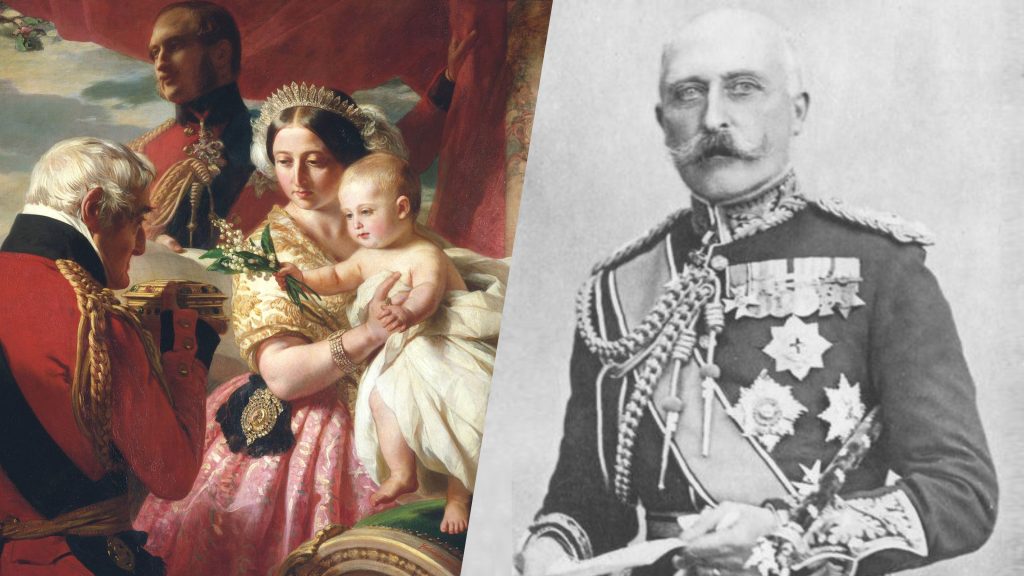
left: The First of May 1851 by Franz Xaver Winterhalter. Prince Arthur is shown on his first birthday, with Victoria, Albert, and the Duke of Wellington, the Great Exhibition (Crystal Palace) in the background |right: Prince Arthur, Duke of Connaught and Strathearn
Born May 1, 1850, Prince Arthur William Patrick, named after the Duke of Wellington, was from the start Queen Victoria’s favorite son. “This child is dear, dearer than any of the others put together, [after Albert] the dearest and most precious object to me on earth,” Victoria wrote.
Arthur, later later Duke of Connaught and of Strathearn, felt destined for the military from an early age, later spending many years in the armed forces. He entered the Royal Military College at age 16. By 1893, he was a full General, and by 1902, a Field Marshall. Arthur traveled extensively in the military, and he was one of the most well-traveled members of the royal family at the time. Arthur was appointed the inspector general to the forces, and later the governor general of Canada.
In 1879, Arthur married Princess Louise Margaret of Prussia. The couple went on to have three children. Louise died in 1917, but Arthur lived until 1942.
- 8.
Prince Leopold George Duncan Albert

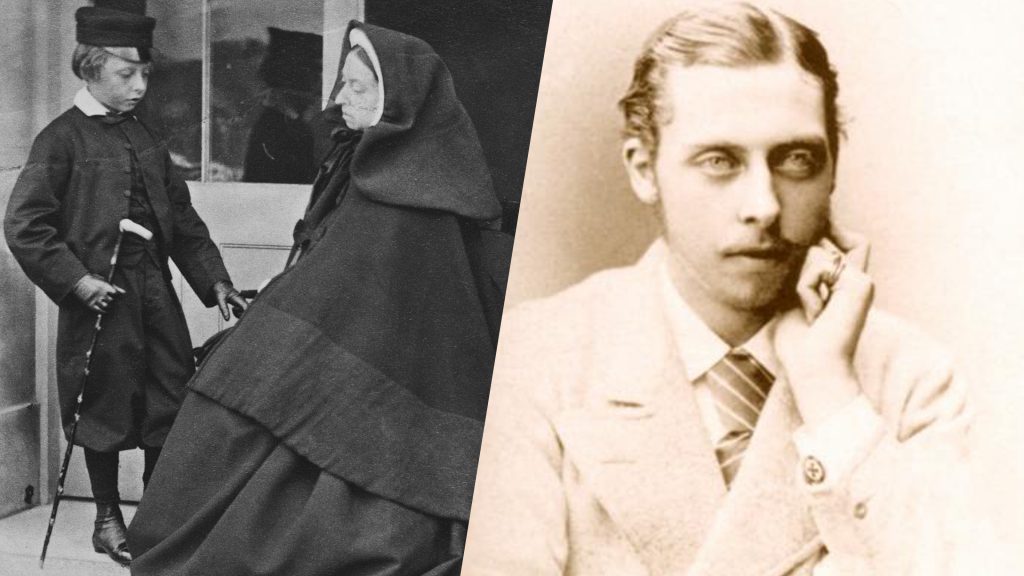
left: Queen Victoria with Prince Leopold, 1862 | right: Prince Leopold, Duke of Albany
Albert and Victoria’s youngest son Leopold was born on April 7, 1853 and was named after Uncle Leopold. Prince Leopold’s birth was significant, in that it was the first time Victoria tried chloroform as an anesthetic during labor. John Snow, the same doctor who was to identify the cause of the 1854 London cholera epidemic, administered the drug, and Victoria was said to be very pleased with its effects.
From a young age, Prince Leopold showed an intellectual curiosity, and grew to be a scholar, studying at Christ Church, Oxford. Among Leopold’s friends at Oxford were the luminaries John Ruskin, Lewis Carroll, and Oscar Wilde. Oxford was also where he met Alice Liddell, the inspiration for Lewis Carroll’s Alice in Wonderland. She was the daughter of the Dean of Christ Church, and she and Leopold quickly developed a deep connection.
Of course, marrying a commoner was not an option for Leopold, and he went on to wed Princess Helena Friederike, in 1882, daughter to the Prince of Waldeck and Pyrmont, a German principality. Alice Liddell instead married fellow Oxford student, Reginald Hargreaves. However, it is no coincidence that Alice named her second son Leopold, and made Prince Leopold his Godfather. Prince Leopold’s first child with Helena was given the name Alice.
Leopold was born with hemophilia, a genetic disease passed on to him by his mother. Though not a hemophiliac herself, Victoria carried the hemophilia B gene. Hemophilia is a blood clotting disorder; sufferers of the disease are susceptible to easy bruising, as well as the increased risk of bleeding, and internal hemorrhaging. He also suffered from epileptic seizures throughout his life. His poor health caused his mother anxiety, and he was prevented from pursuing a service career, instead choosing to study at Oxford and become a patron of arts and literature.
Leopold was just 30 years old, in March of 1884 when, in Cannes, France, he slipped and fell hitting his head and causing a cerebral hemorrhage. He died the next day. Helena, five months pregnant at the time, gave birth to Leopold’s son Charles Edward, in July of the same year.
- 9.
Beatrice Mary Victoria Feodore

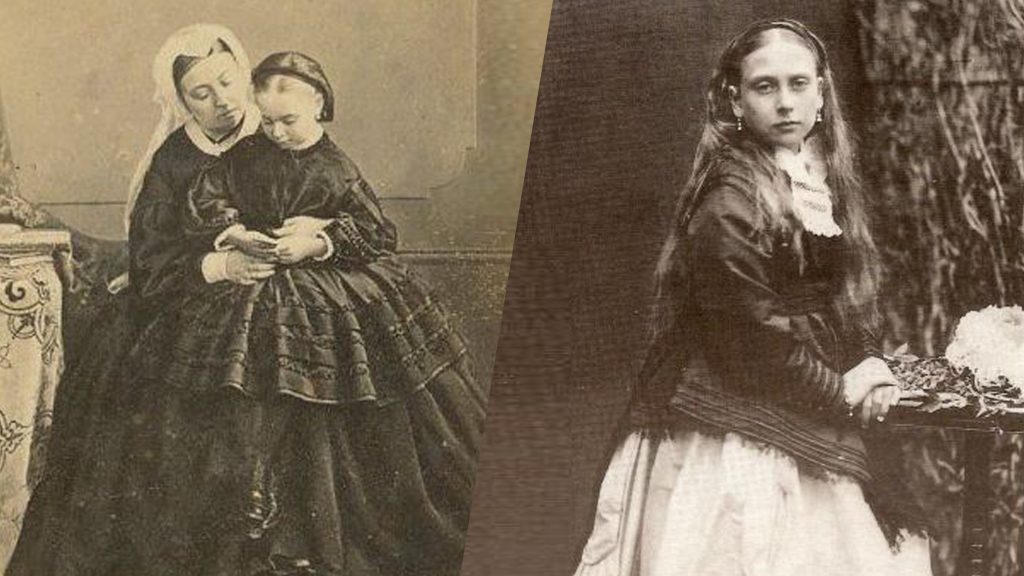
left: Queen Victoria holding Princess Beatrice in 1862 | Princess Beatrice, photographed by Royal Photographers W & D Downey, 1868
Born on April 14, 1857, Beatrice, the last child born to Victoria and Albert, was only four years old when her father died, and her childhood was overshadowed by her mother’s deep grief. Beatrice, or ‘Baby’ as she was called, helped to fill a deep void for Victoria, who leaned heavily on her youngest child.
As the youngest, Beatrice was expected to be her mother’s caretaker. After following the educational path laid out for her by her late father, Beatrice did indeed become a valuable personal-assistant to her mother. In 1884, Beatrice met Prince Henry of Battenberg, and fell in love. When she confessed to her mother her desire to marry, Queen Victoria was astonished, and their relationship was strained for a time. Eventually, the Queen came around, sanctioning the marriage with a few caveats. Henry had to move to England to live with Beatrice and the Queen, allowing Beatrice to stay by her mother’s side.
Beatrice and Henry’s marriage took place on July 23, 1885. Together, they had three sons and a daughter. All the while, Beatrice remained her mother’s secretary and companion. Henry was given various appointments by the Queen to keep him busy, ultimately becoming an army Colonel, but he was restless living at the palace. In 1895, he travelled to Africa to fight in the Anglo-Ashanti Wars. Within just a few weeks of being there, he contracted malaria, and died while on his way home to England.
After Queen Victoria died in 1901, Beatrice spent many years transcribing and editing her mother’s journals. Beatrice lived until 1944 and was the last of Victoria and Albert’s nine children to survive.








